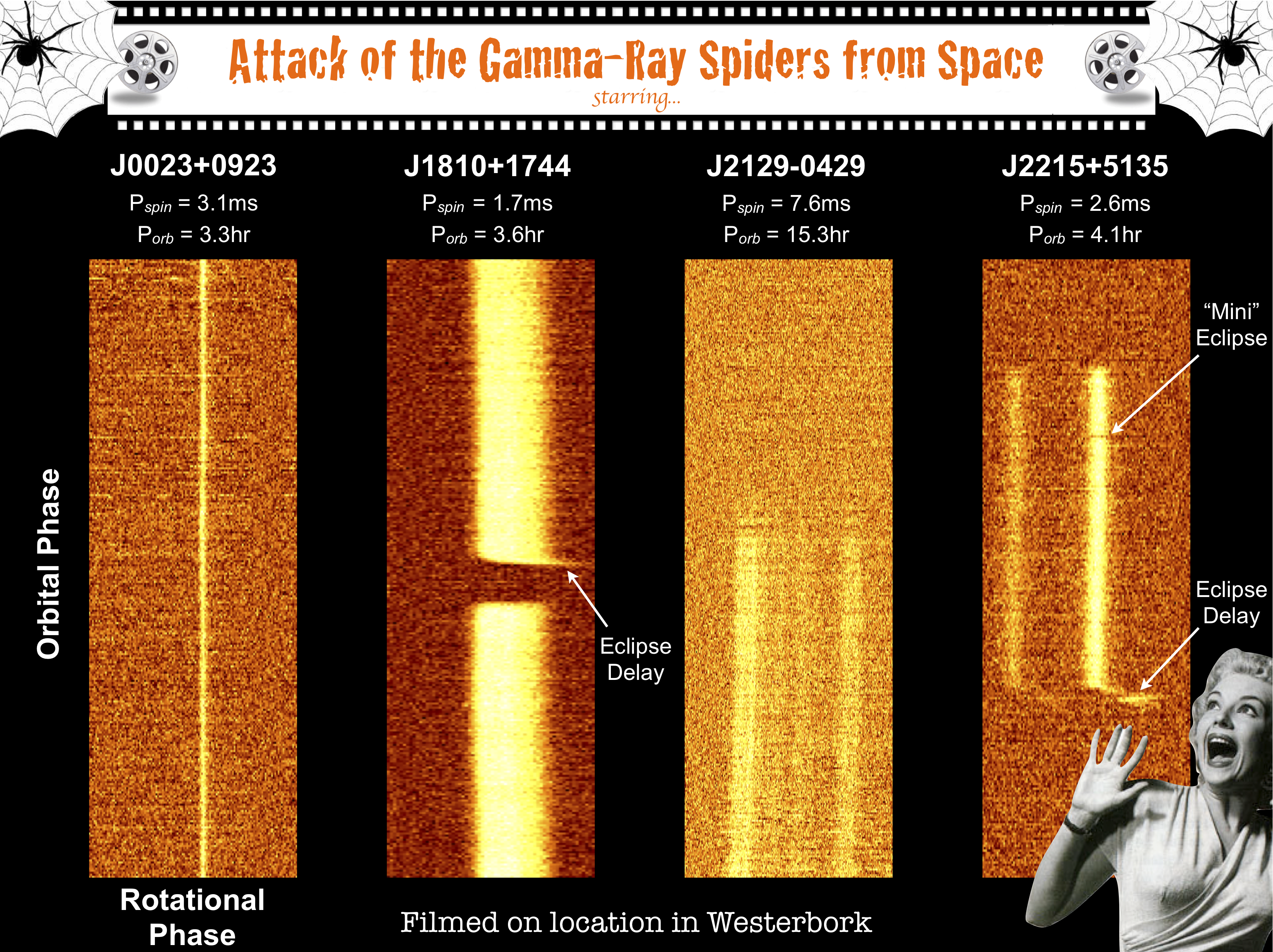Daily Image
30-03-2012Attack of the Gamma-Ray Spiders from Space
| Submitter: | Jason Hessels |
| Description: | Millisecond pulsars spin hundreds of times a second. They achieve these phenomenal spin rates though a process known as "recycling", in which a slowly rotating neutron star accretes matter and thereby gains angular momentum from a companion star that has filled its Roche lobe. Such systems first exist as X-ray binaries, but after accretion terminates the neutron star is left visible as a rapidly spinning radio pulsar. This process clearly explains why such a large fraction of millisecond pulsars have binary companions. Some millisecond pulsar binary systems also show eclipses and other timing irregularities, which are due to the strong wind of the pulsar ablating material from its companion and thereby creating a cloud of gas that can affect the observed radio pulsations. Such systems are traditionally referred to as "black-widows", in analogy to the cannabalistic, companion-eating spider of the same name. As part of a coordinated survey of unidentified Fermi gamma-ray sources by the "Pulsar Search Consortium", we have discovered upwards of 10 black-widow pulsars. This image shows ~5-hr Westerbork observations of 4 of the new pulsars, using the PuMaII pulsar backend. These reveal the eclectic eclipsing behavior of these sources. We are studying these sources to understand the evolution of millisecond pulsars in general, the link with isolated millisecond pulsars (whose existence is still a mystery), and the physics behind the intra-binary interaction between the relativistic pulsar wind and the companion star. We would also like to figure out why such a large fraction of the millisecond pulsars being discovered through targeted gamma-ray searches are black-widows. It's possible that some of the gamma-ray emission is from an intra-binary shock, but it could also simply be the case that these pulsars have been missed by past surveys because of eclipses or other observational biases. |
| Copyright: | JWTH |
| Tweet |  |
